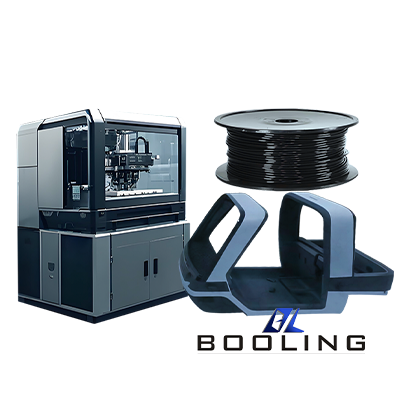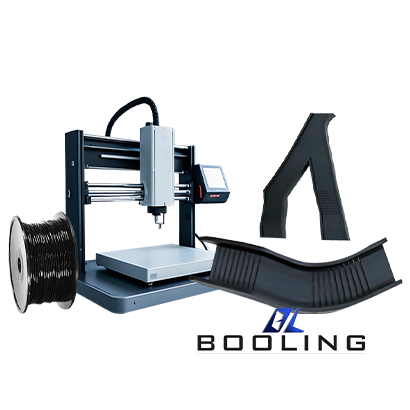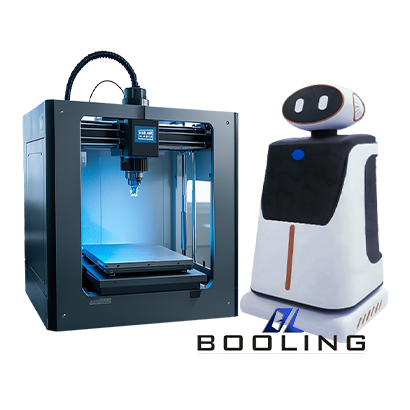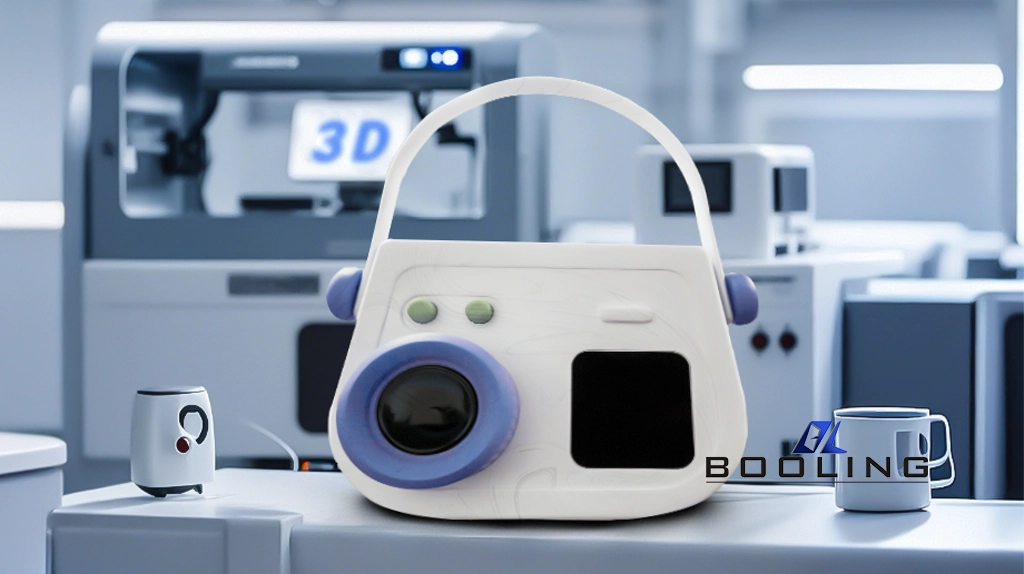Home > 3D Printing Service > ABS 3D Printing
ABS 3D printing is a high-tech technology developed based on the personalized needs of daily life, which can easily create and customize complex parts. ABS is a widely used thermoplastic with excellent heat resistance, chemical resistance, and mechanical properties. Booling uses ABS 3D printing technology to realize the manufacture of mold rapid prototyping, automotive parts, electronic housings, and other products to meet the different needs of users.

ABS stands for acrylonitrile-butadiene-styrene copolymer. It is a common thermoplastic plastic. It is ivory in color and has an opaque, smooth, and shiny surface. It is particularly suitable for the processing of 3D printing products with high surface requirements.
- High Material Utilization Rate
- Low Environmental Pollution
- Easy to Operate
ABS 3D Printing Capabilities
The FDM 3D printing process for ABS material has a high production efficiency. This process heats and melts the ABS material to form a filamentary material, which is further heated to a molten state in the nozzle and deposited at the specified position according to the control path of the layered data, and then forms a complete part after layer by layer accumulation.
·
US
Metric
ABS
47.2in. x 31.4 in. x 23.6 in.
1200mm x 800mm x600mm
*The surface smoothness of the ABS material is relatively smooth, and it can be directly used for some applications with high appearance requirements.
ABS 3D Printing Material
ABS is a thermoplastic made from the copolymerization of acrylonitrile, butadiene, and styrene. It has excellent tensile strength and impact resistance and is suitable for the manufacture of functional parts for long-term use.
Material
- ABS
The Advantages of ABS 3D Printing
As an ABS 3D printing manufacturer, Booling can provide the best 3D printing solutions with outstanding advantages.
- ABS material has high toughness and surface quality, 3D printed products are more impact-resistant and durable and can be directly applied to product processing with high appearance requirements
- ABS, as a thermoplastic, is easier to print and achieves efficient production
- Widely used, such as automotive parts, electronic equipment housings, electrical appliances, and other fields
- Has good chemical resistance and a wide processing temperature range, high processing stability
- ABS material cost is relatively low, achieving a high-cost performance

Application of ABS 3D Printing
ABS 3D printing technology is widely used and can be used for rapid prototyping of plastic molds, which is convenient for manufacturers to optimize products and develop new products. Booling can also directly provide 3D printed products, such as automotive parts, spacecraft parts, daily consumer goods, medical equipment, etc.

Guidelines for ABS 3D Printing
Booling engineers can directly provide you with the best solutions for ABS 3D printing and achieve one-to-one efficient communication.
ABS 3D printing belongs to additive manufacturing technology. Booling engineers produce products with high strength, high-temperature resistance, and good surface quality through 3D modeling, slicing, material processing, printing, post-processing, and other processes.

ABS 3D Printing Process
ABS material has become the most commonly used thermoplastic in 3D printing technology due to its high strength and high surface quality. Booling provides FDM and SLA customized processing to meet users’ needs for different processing precision.
- Fused Deposition Printing (FDM): FDM is the most common ABS 3D printing technology. The ABS filament is heated to soften through the nozzle and deposited layer by layer on the printing platform through the extruder to form a complete 3D-printed product. ABS FDM 3D printed products have high strength and durability, excellent mechanical properties, and are suitable for rapid prototyping molds and direct product manufacturing.
- Stereolithography (SLA): SLA technology uses ultraviolet light to cure ABS photosensitive resin, photopolymerization reaction occurs, and solid parts accumulate layer by layer. ABS photosensitive resin is a special liquid resin material with a fast curing speed, which can meet the processing of complex structures and high-precision parts. During the SLA process, engineers will set the appropriate printing temperature and platform heating temperature to avoid defects such as warping caused by excessive temperature.
Application of ABS 3D Printing
ABS 3D printing technology is widely used in automotive, electronic and electrical, medical equipment, sporting goods, and other industries.
- Automobile: ABS is often used for the direct manufacture of automotive exterior and interior parts, such as dashboards, steering wheels, bumpers, door panels, etc., which can meet the rapid manufacture of complex structures and component prototypes. Booling also provides 3D printing services for automotive rapid prototype molds to enable automobile manufacturers to quickly update and test products
- Electronic and electrical: ABS 3D printed products have good durability and surface quality, suitable for the processing of electronic and electrical housings
- Medical equipment: ABS is not biocompatible, but has good surface quality and can be used for the production of medical device housings, anatomical models, and various teaching aids
- Sporting goods: Due to the good strength and surface quality of ABS, it can be used to manufacture sports protective gear, helmets, and other products. It can maintain good performance at extreme temperatures, is not easy to deform, and is durable
- Other fields: ABS 3D printing technology is also widely used in packaging, furniture, machinery, and other fields, providing products with high strength and dimensional stability
